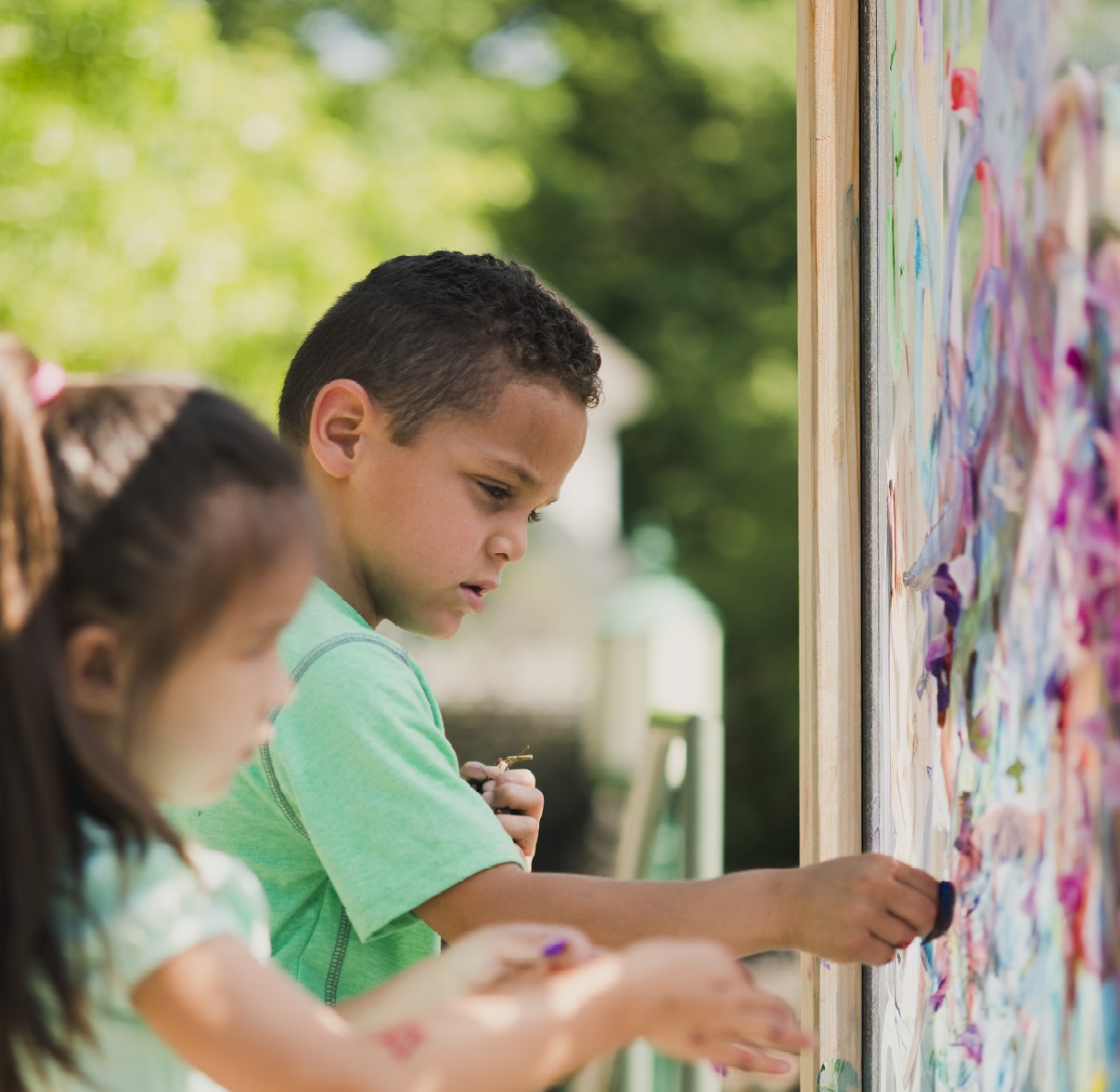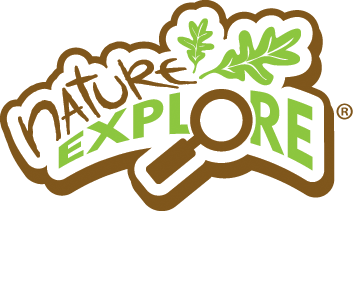Finding our Place Through Creativity

This is the seventh in a series of blogs highlighting “Growing with Nature: Supporting Whole-Child Learning in Outdoor Classrooms.” Contributors include Dimensions Educational Research Foundation executive director Nancy Rosenow and members of the Nature Explore education team.
Perhaps one of the first—and most enduring—lessons an educator learns is that creativity is the way children express their uniqueness. Whether they act out stories, make music, paint or draw, they make visible what they know, what they feel and who they are. The creative arts manifest in myriad ways in an outdoor classroom, among them creative dramatics, music and movement and visual art.
Many adults express growing concern that children’s play has become dominated by commercial media. Teachers often observe children acting out popular television shows and movie characters, rather than creating their own ideas. Often, this scripted play is repetitive and violent. When children have access to open-ended natural materials which with to create their own props, it seems to fuel their innate creativity. Here’s one example:
“’You know what we can play? Let’s skydive,’ Peter whispered to a group of friends on the climbing platform. And just like that, the adventure began. The boys gathered materials (sticks, bark and scraps of cloth) for props such as parachutes and backpacks. One boy wanted a camera, but the group was unable to decide which material was the right shape to be a camera. Eager to keep things moving along, Peter told the others, ‘Pretend it is in the attic and we can’t find it. Let’s play, dudes!’ One by one the boys enjoyed ‘skydiving’ by jumping down from a platform, racing to a far building, tagging it, and racing back.”
–Sharon Young, Children’s Place at St. Andrew’s Presbyterian Church, Houston, TX
Nature, music and movement are a perfect grouping. We know that children must move to learn, and Nature Explore Classrooms—with their loose parts and handmade musical instruments—provide just the setting. These opportunities can be particularly profound for children with special needs.
“Kevyn, who exhibits autistic characteristics, usually spends his time outside by himself, not interacting with other children or teachers, despite their efforts to include him. One day, Kevyn’s class was playing in the Nature Explore Classroom. As usual, Kevyn began outdoor time by walking around by himself. He stopped when he noticed another child, Bobby, at the akambira in the Music Area. Bobby was playing with the small rubber mallets. After watching awhile, Kevyn moved to stand close. A teacher asked Bobby if Kevyn could use one of the mallets, and he handed it to her. When she passed it to Kevyn, he began playing also. This was the first time the teacher had seen Kevyn initiating play with another child or even using the same material or toy simultaneously. The two children played together for a few minutes before Kevyn moved on. Kevin has returned to the akambira several times since to make his own music with other children.”
–Barbara Hughes, The SPARK Center, Mattapan, MA
Learning to interpret the world around us so that we can find our place in it—and contribute to it—is what education is all about. Creating art is one way children can synthesize all that they are learning about the world. In the following story, an educator infused art into children’s learning with nature, setting the stage for a broad range of magical new skills.
“Our infants were encouraged to work together to cover a large stone with freshly fallen leaves from the Discovery Play Garden. This was a project inspired by artist Andy Goldsworthy’s work with natural materials. This type of exploration not only provides a unique tactile experience, but also encourages both fine and large motor development and control over wrists, hands, and finger movement.”
–Caitlin Bouse, Elmhurst Academy of Early Learning, Elmhurt, IL
For more inspiring stories that highlight flourishing creative arts—and ideas that can be recreated in outdoor classrooms or family backyards—“Growing with Nature” is available here.

